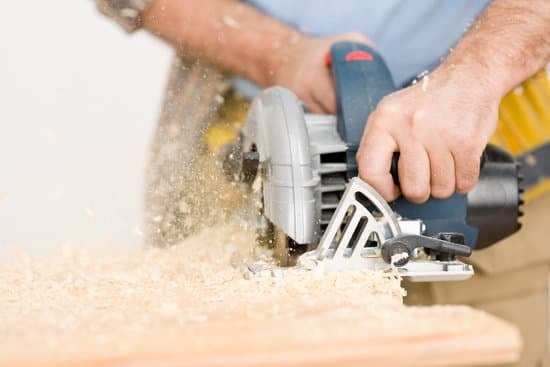Are you looking to make some improvements to your home but don’t have the cash on hand to fund the project? If so, you might be considering a home improvement loan. In this article, we will walk you through everything you need to know about getting a home improvement loan, from assessing your needs and researching loan options to understanding the application process and maximizing your chances of approval.
When it comes to making updates or renovations to your home, the costs can quickly add up. Whether you’re looking to remodel your kitchen, add an extra bathroom, or make energy-efficient upgrades, a home improvement loan can help make your vision a reality. But before diving into the application process, it’s important to understand the different types of loans available and how they can best suit your needs.
In this comprehensive guide, we will provide you with all the information you need to confidently navigate the world of home improvement loans. From determining the scope of your project and exploring eligibility criteria for different loan options to preparing your financial documents and maximizing your chances for approval, we’ve got you covered every step of the way.
Let’s get started on turning your home improvement dreams into a tangible plan with the help of a home improvement loan.
Assessing Your Home Improvement Needs
When it comes to getting a home improvement loan, the first step is to assess your home improvement needs and determine the scope of the project. Whether you are looking to renovate your kitchen, add an additional room, or upgrade your outdoor living space, it’s important to have a clear understanding of what needs to be done before seeking out a loan.
To determine the scope of your home improvement project, consider creating a list of all the upgrades or renovations that you would like to make. This could include changes to the flooring, electrical work, plumbing updates, and any other structural modifications. Once you have a comprehensive list, prioritize the items based on what is most essential and what can potentially wait.
Once you have determined the scope of your project and created a prioritized list of improvements, it will be easier to determine how much funding you will need for the project. With this information in hand, you can then begin exploring different types of home improvement loans and their eligibility criteria.
Whether you opt for a personal loan, home equity line of credit (HELOC), or a cash-out refinance, having a clear understanding of your project’s scope will help you make an informed decision when applying for a loan.
- Determine all renovations needed
- Create a prioritized list
- Estimate total funding needed
Researching Different Types of Home Improvement Loans
When it comes to home improvement projects, sometimes the costs can add up quickly. Whether you’re considering a kitchen remodel, adding a new bathroom, or renovating your outdoor space, obtaining a home improvement loan can help make your renovation dreams a reality. However, before applying for a loan, it’s important to understand the different types of home improvement loans available and their eligibility criteria.
Exploring Options for Home Improvement Loans
Before diving into the application process, take some time to research the various options for home improvement loans. Traditional options include home equity loans or lines of credit, which allow homeowners to borrow against the equity in their homes. Another option is a personal loan, which doesn’t require the use of your home as collateral. Government-backed loans such as FHA Title I Property Improvement Loan Program and VA cash-out refinance loans are also available for eligible homeowners.
Evaluating Eligibility Criteria
Each type of home improvement loan has its own set of eligibility criteria. For example, home equity loans typically require homeowners to have a certain amount of equity built up in their homes and a good credit score. Personal loans may have less stringent requirements but often come with higher interest rates. Government-backed loans may have specific requirements related to the type of renovation being done and other qualifying factors.
Consulting With Lenders
Once you have an understanding of the various types of home improvement loans and their eligibility criteria, consider consulting with lenders to get personalized information about your options. Many lenders offer pre-qualification processes that can give you an idea of what you may qualify for without affecting your credit score. By comparing offers from different lenders, you can make an informed decision about which type of loan best suits your needs and budget.
Researching different types of home improvement loans is crucial in finding the best financing option for your project. By exploring the options and understanding the eligibility criteria for each type of loan, you can make an informed decision when it comes time to apply for financing.
Understanding the Application Process
Applying for a home improvement loan can be an important step towards making your home renovation dreams a reality. Whether you’re looking to add a new room, upgrade your kitchen, or install energy-efficient windows, a home improvement loan can provide the financial support you need. Here’s a step-by-step guide to help you navigate the application process and secure the funding you require.
Step 1: Determine Your Budget
Before applying for a home improvement loan, it’s crucial to establish a realistic budget for your project. Consider the scope of the renovations you want to undertake and conduct research on the average costs associated with similar projects in your area. By determining a budget upfront, you’ll have a clearer idea of how much financing you’ll need.
Step 2: Research Lenders and Loan Options
Once you have an idea of your budget, it’s time to research different lenders and explore the variety of loan options available. From traditional banks to online lenders, there are numerous sources where you can obtain a home improvement loan. Take the time to compare interest rates, terms, and eligibility criteria in order to find the best fit for your financial situation.
Step 3: Gather Required Documentation
When applying for a home improvement loan, it’s essential to gather all necessary documentation ahead of time. Generally, lenders will require proof of income, employment history, credit score, and details about your project such as contractor estimates or renovation plans. Having these documents prepared will streamline the application process and demonstrate your readiness to proceed with the renovation.
By following these steps and staying organized throughout the application process, you can increase your chances of securing the funding needed for your home improvement project. With careful planning and thorough preparation, obtaining a home improvement loan is achievable and can turn your renovation vision into reality.
Comparing Interest Rates and Terms
When looking to fund your home improvement project, it’s important to carefully consider the interest rates and terms of different loan options to ensure that you find the best fit for your budget. Comparing interest rates and terms will help you determine the total cost of borrowing and understand how it will impact your financial situation in the long run.
Researching Different Types of Home Improvement Loans
Before comparing interest rates and terms, it’s essential to research the different types of home improvement loans available to you. Some common options include personal loans, home equity loans, home equity lines of credit (HELOC), and FHA 203(k) renovation loans.
Each type of loan has its own set of interest rates and terms, as well as eligibility criteria. By understanding the pros and cons of each option, you can narrow down your choices and focus on finding the best loan option for your specific needs.
Comparing Interest Rates
Interest rates can vary significantly depending on the type of loan, lender, credit score, and market conditions. It’s important to compare the annual percentage rate (APR) which includes both the interest rate and any additional fees or charges.
Look for lenders who offer competitive rates that are within your budget. Keep in mind that a lower interest rate can save you money over time, so take the time to shop around and get quotes from multiple lenders before making a decision.
Understanding Terms and Repayment Options
In addition to comparing interest rates, it’s crucial to understand the repayment terms and options offered by different lenders. Consider factors such as the loan term, monthly payment amount, repayment schedule, prepayment penalties, and any other fees associated with the loan.
Pay close attention to whether the loan has a fixed or variable interest rate – a fixed rate provides predictable monthly payments while a variable rate may fluctuate over time. Determine which repayment options align with your financial goals and capabilities before committing to a home improvement loan.
By carefully comparing interest rates and terms from various lenders, you can find the best home improvement loan option for your budget without sacrificing long-term financial stability.
Preparing Your Financial Documents
When applying for a home improvement loan, it is important to prepare all the necessary financial documents to increase your chances of approval. Lenders will require specific documentation to assess your financial stability and ability to repay the loan. Here’s what you need to gather before applying for a home improvement loan.
One of the most essential financial documents you’ll need is proof of income, which can include pay stubs, W-2 forms, or tax returns. Lenders use this information to verify your employment and income level, ensuring that you have the means to make timely loan payments. Additionally, they may also request bank statements to get a complete picture of your financial situation.
In addition to proof of income, lenders will also review your credit history and score as part of the application process. Your credit score plays a significant role in determining whether you qualify for a home improvement loan and can impact the interest rate you receive. Be prepared to provide access to your credit report and be transparent about any past credit issues.
Lastly, you may need to provide details about the home improvement project itself, including estimates from contractors or receipts for materials already purchased. This helps lenders understand how the funds will be used and assess the potential value added to your property. By having these financial documents ready when applying for a home improvement loan, you can streamline the process and demonstrate your readiness for this financial responsibility.
| Financial Documents | Details |
|---|---|
| Proof of Income | Pay stubs, W-2 forms, or tax returns |
| Credit History | Credit report and explanation of past credit issues |
| Project Details | Estimates from contractors or receipts for materials purchased |
Tips for a Successful Loan Approval
Now, that you have a clear understanding of the different types of home improvement loans and how to apply for them, it’s time to focus on maximizing your chances of getting approved. Here are some tips to help you navigate the loan approval process and increase your likelihood of securing a home improvement loan.
First and foremost, it’s important to review your credit score before applying for a home improvement loan. Lenders will heavily rely on this score to determine your creditworthiness. A higher credit score can lead to better loan terms and higher approval chances. If your credit score is not where you want it to be, consider taking steps to improve it before applying for a loan.
Additionally, ensure that you have a stable income when applying for a home improvement loan. Lenders will want to see that you have the financial means to repay the loan. Providing proof of consistent income through pay stubs or tax returns can strengthen your loan application.
Another tip is to carefully evaluate your debt-to-income ratio. Lenders will assess this ratio as it provides insight into your ability to manage additional debt. Aim to lower your existing debts or increase your income to improve this ratio before applying for a home improvement loan.
By following these tips and thoroughly preparing yourself financially, you can significantly increase your chances of getting approved for a home improvement loan. Remember to present yourself as a responsible borrower with strong financial standing in order to secure the best terms and rates available in the market.
Conclusion
In conclusion, getting a home improvement loan can be the key to making your home improvement dreams a reality. By understanding the need for a home improvement loan and assessing your project needs, you can determine the scope of the work required and start exploring different types of loans and their eligibility criteria. Additionally, understanding the application process and preparing necessary financial documents will ensure a smooth and successful loan approval process.
Researching and comparing interest rates and loan terms is crucial to find the best option that fits your budget. By following these steps and tips for a successful loan approval, you can maximize your chances of getting approved for a home improvement loan. With careful planning and thorough research, you can secure the funds needed to make the necessary improvements to your home.
Ultimately, a home improvement loan is an investment in your property and can help increase its value. Whether it’s remodeling your kitchen, adding an extra bedroom, or enhancing your outdoor living space, a home improvement loan gives you the opportunity to transform your living space into something truly special.
So don’t let financial constraints hold you back from realizing your vision for your home – explore how to get a home improvement loan today and take that first step towards making your dream home a reality.
Frequently Asked Questions
What Is the Minimum Credit Score for a Home Improvement Loan?
The minimum credit score for a home improvement loan can vary depending on the lender. In general, a FICO score of 620 or higher is often required to qualify for most home improvement loans.
What Is the Average Length of a Home Improvement Loan?
The average length of a home improvement loan typically ranges from two to seven years. However, the specific term of the loan will depend on factors such as the amount borrowed and the borrower’s financial situation.
Are Renovation Loans a Good Idea?
Renovation loans can be a good idea for homeowners who need financing to make improvements to their property. These loans can provide funds for necessary renovations and upgrades, ultimately increasing the value of the home. However, it’s important for borrowers to carefully consider their financial situation and ensure they can afford the loan payments before pursuing this option.

I’m thrilled to have you here as a part of the Remodeling Top community. This is where my journey as an architect and remodeling enthusiast intersects with your passion for transforming houses into dream homes.





